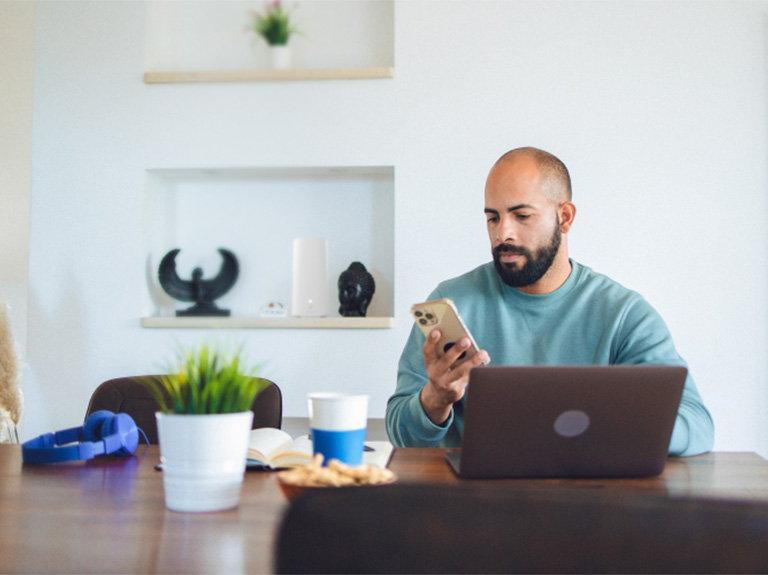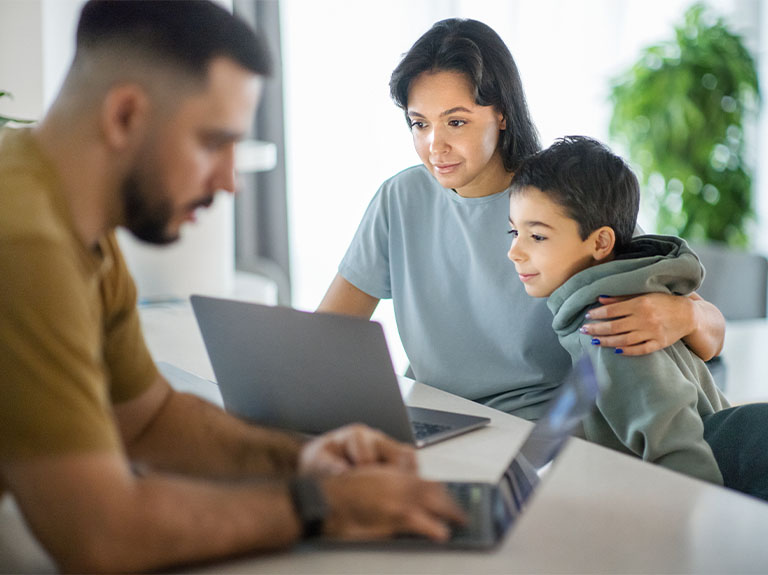AT&T is Connecting Our Communities to Possibility
Connecting Our Communities to Possibility
Local Success Requires Local Solutions to Help Bridge the Digital Divide
A lack of access to high-quality connectivity, limited digital resources and tight household budgets are just a few of the challenges facing communities impacted by the digital divide. To fully participate in our modern world, people need digital skills and access to resources to thrive.
At AT&T, we are continuing our company-wide Bridge to Possibility: Closing the digital divide, together campaign to drive awareness of the digital divide and the collective response needed to address it. We’re focusing on the power of working together in local communities.
We understand no two communities are the same. Each community requires unique solutions, and it takes intentional collaboration to remove barriers to reliable connectivity. Our conversations with local policymakers, nonprofit organizations and our own employees, who are members of these communities, are crucial to making an impact. We listen to the challenges they face, brainstorm ideas to meet the unique needs of their community and come up with solutions, together – that’s the AT&T approach to connecting communities.
Just last week, through a public-private partnership with Vanderburgh County, Indiana, we brought fiber broadband to thousands of locations throughout the county – a largely rural community where roughly one-third of homes, farms and businesses did not have access to fixed broadband service before the fiber build. And it doesn’t stop there. We’re building on this foundation with unprecedented levels of support from public funds made available through the Infrastructure Act and the American Rescue Plan (ARP). Thus far, AT&T has been selected to build networks in in Indiana, Kentucky, Louisiana and Texas covering more than 84,000 households and businesses.
Our AT&T Connected Learning Centers (CLCs) are also at the heart of our approach. Located within non-profits and local community organizations, our CLCs provide connectivity and support to people in need. These centers provide free access to a range of digital resources under one roof. We combine high-speed AT&T Fiber and Wi-Fi connected computers with tutoring, mentoring resources and free digital literacy and education programs, such as The Achievery. So far this month, we’ve launched new CLCs in Augusta, Chicago, Los Angeles and Atlanta.
“As we continue our work to make Atlanta a city of opportunity for all, we need to ensure equity in access to digital tools and high-speed internet across our city,” said Atlanta Mayor Andre Dickens. “The launch of the AT&T Connected Learning Center is another step toward bridging the digital divide in our communities and ensuring there is a level playing field for every Atlanta family.”
We’re building on these efforts through our work with the Public Library Association and in collaboration with organizations like Digitunity and Connected Nation. Together, we’re bringing bilingual, in-person digital literacy workshops to more than 400 libraries and community centers and providing free or low-cost computers to 20,000 K-12 aged students and their families.
Our employees also play a critical role in our local efforts. From AT&T engineers planning and building networks in neighborhoods, to customer service specialists helping people choose the best products and services to fit their needs, AT&T employees are creating bridges to connectivity every day. In addition, they’re taking their personal time to help close the digital divide through volunteer efforts like tutoring, mentoring and teaching digital literacy workshops in their own communities and virtually. In fact, earlier this week, dozens of AT&T’s senior leaders distributed devices to Texas families who didn’t have the resources to fully participate in this age of connectivity.
Bridging the digital divide helps our children, our families and our society. In communities large and small, we’re seeing how connectivity drives local impact. When we work together, we build a bridge to possibility for communities in every corner of our country.
Read more Digital Divide news



